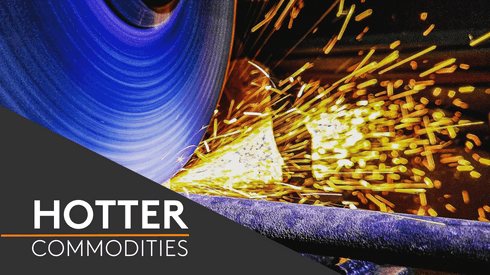Primary aluminium production in China totaled 3.67 million tonnes in June, according to data from the National Bureau of Statistics, its highest level in nearly a decade, marking a 6.2% year-on-year increase.
But primary aluminium demand in the region has also been rising, up by 3% year on year in the second quarter of 2024 according to data released by Hydro in its most recent quarterly results.
“Demand in Asia seems to be quite good, which protects the globally traded primary aluminium market to a certain extent,” Kallevik said.
“When you look to Chinese demand [specifically], it’s interesting. I look to it as a kind of proof point of the importance of aluminium when you go through the green shift,” he added.
“When you look at [the Chinese] demand growth in the first half [of 2024], both when it comes to grid infrastructure, but also solar panels, it is quite impressive, outweighing the rather depressed or downtrodden building and construction market which was typically a big off taker of aluminium in that region,” Kallevik said.
A report by Dutch bank ING previously noted that aluminium is the single most widely used mineral material in solar photovoltaic (PV) applications, accounting for more than 85% of the mineral material demand for solar PV components.
Sources at China-based financial institutions told Fastmarkets that the PV industry’s aluminium consumption has increased to a projected use of 4 million tonnes in 2024, from less than 1 million tonnes in 2020.
“[In Europe], within what you can define as the green transition sectors, you will also continue to see relatively good performance,” Kallevik said.
“We still see development of renewables in Europe which will need more aluminium as well as expansion of solar panels. Whether those will [show] a stellar growth performance in the second half [of 2024] remains to be seen, but there are some brighter spots,” he added.
Beyond the green transition, however, traditional downstream demand sectors for aluminium have been performing below expectations, Kallevik said.
“On the extrusion side, we continued to see a downward trend in the first half [of 2024], and when you look to the second half there has been an anticipation in the marketplace that there will be a recovery,” he said.
“More and more people are doubting whether this will come in the second half of the year or not… This is what we have tried to indicate, that the expected upturn as anticipated by analysts may not happen,” he added.
Hydro noted that European extrusion demand is estimated to have decreased by 14% in the second quarter of 2024 compared to the previous year, while posting a 5% quarter-on-quarter increase, partly driven by seasonality.
Hydro Extrusion sales volumes to the external market were down by 11% in the second quarter year on year, while the company’s total revenue recorded a loss of 5% to 50,944 NOK million.
Follow discussions around decarbonizing the aluminium industry with the latest price trends, market insights and forecasts on our dedicated low-carbon aluminium price page.





